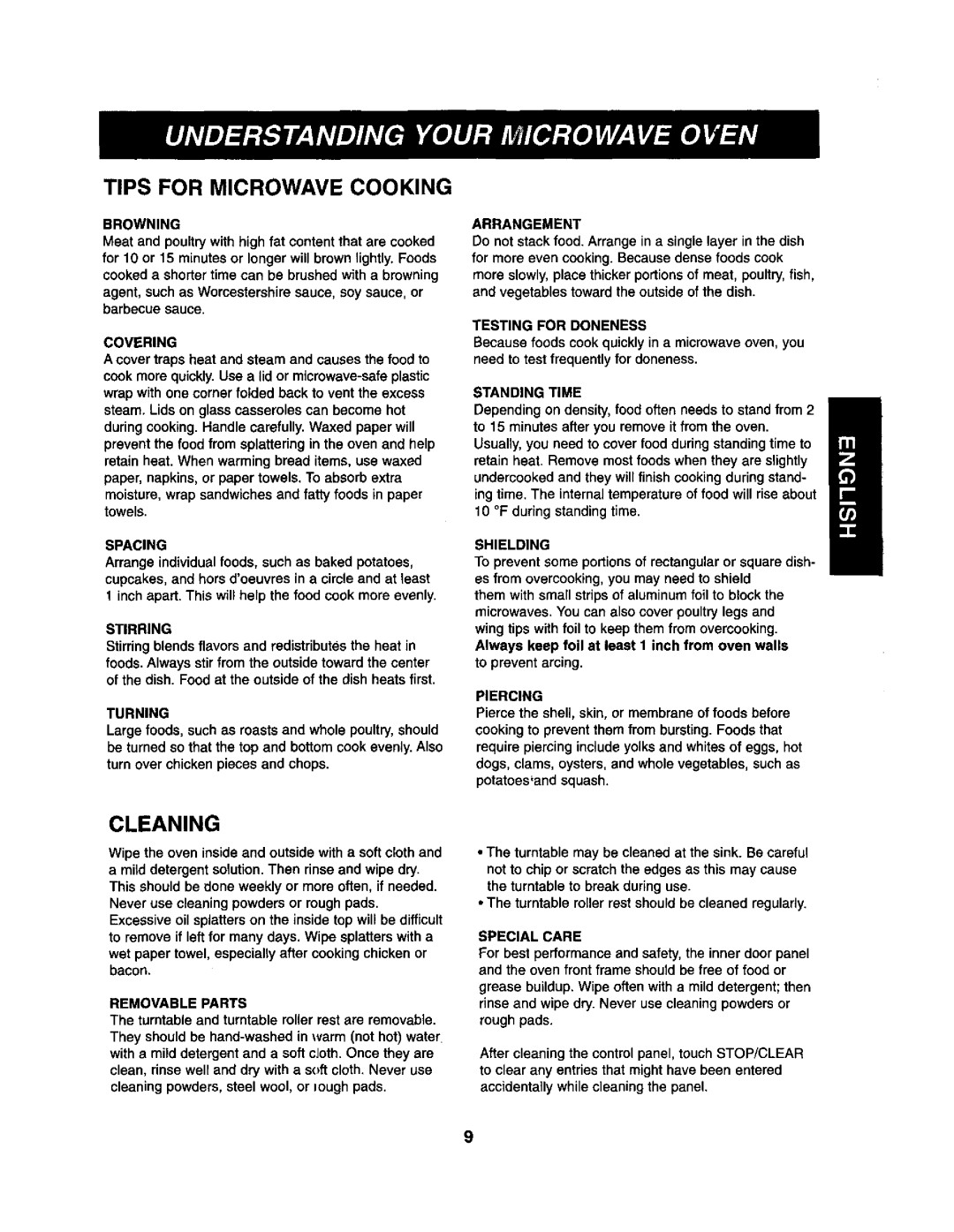721.62369, 721.62364, 721.62362 specifications
The Kenmore 721 models 62362, 62364, and 62369 represent a significant advancement in home kitchen appliances, specifically in the realm of microwave ovens. These models boast an array of features designed to enhance cooking convenience and efficiency.First and foremost, each model is equipped with a powerful cooking wattage, typically around 1000 watts, which ensures rapid cooking and consistent results. This high wattage allows for efficient heating, making them ideal for a variety of cooking tasks from defrosting to reheating leftovers.
One standout feature common across these models is the Sensor Cooking technology. This innovative cooking function automatically detects moisture released during cooking and adjusts power levels and cooking time accordingly. This means users need not guess cooking times, as meals come out perfectly cooked every time, whether it's a frozen dinner or a bowl of soup.
These microwaves also include a range of pre-programmed settings, which further simplify meal preparation. Options like popcorn, pizza, baked potato, and more allow users to achieve optimal results for popular foods with just a touch of a button. The easy-to-use control panel is user-friendly, making meal prep approachable for cooks of all skill levels.
In addition to performance, the Kenmore 721 series is designed with a sleek exterior that suits a variety of kitchen decors. Models vary slightly in size and color but maintain a modern aesthetic with stainless-steel finishes that resist fingerprints and smudges, ensuring they remain stylish in any kitchen environment.
The spacious internal capacity of these microwaves allows for large dishes or multiple servings to be cooked simultaneously. The turntable feature ensures even cooking by rotating food during the cooking process, while the easy-to-clean interior surface helps maintain hygiene with minimal effort.
Safety features are also a priority for the Kenmore 721 series. Child lock settings are available to prevent accidental use, providing peace of mind in homes with young children.
In summary, the Kenmore 721.62362, 721.62364, and 721.62369 microwaves combine powerful performance, innovative cooking technology, and user-friendly features, making them an excellent choice for anyone looking to enhance their kitchen capabilities. Whether for reheating meals, cooking from scratch, or defrosting, these models deliver reliability and efficiency, appealing to both novice and experienced cooks alike.

